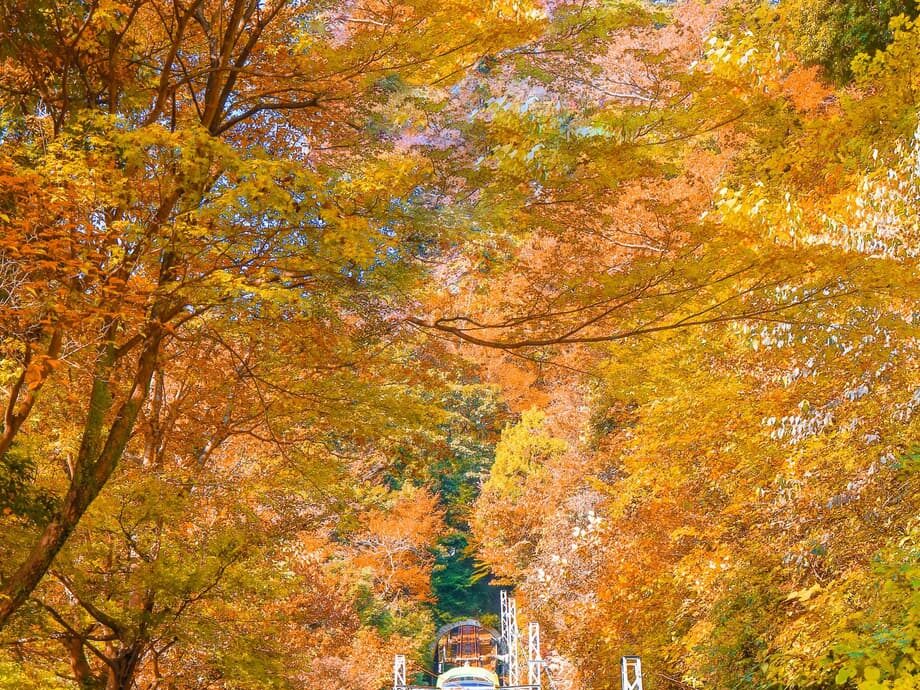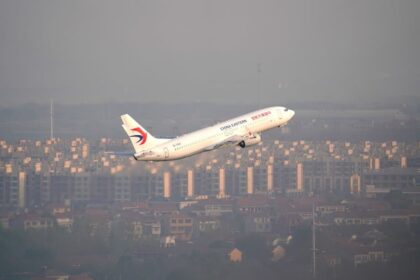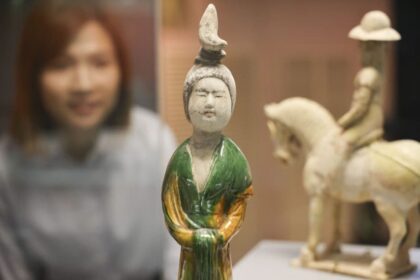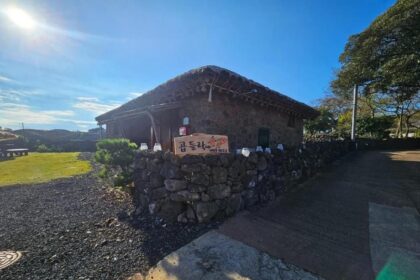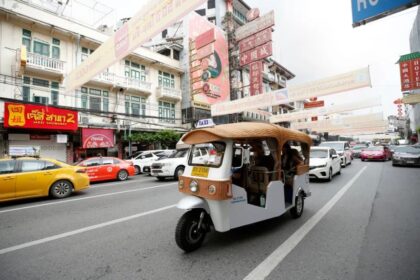Autumn by train in Japan, explained
Autumn in Japan turns everyday rail journeys into moving panoramas of color. Maple and ginkgo trees light up valleys, riverbanks, and temple towns in shades of crimson and gold. Trains glide past this changing scenery at a human pace, close enough to see texture in the leaves and reflections in the water. Interest in these trips is surging. The Japan National Tourism Organization has reported strong growth in visitors in 2024 from markets such as India, and rail continues to be one of the easiest ways to reach both marquee sights and quiet countryside. A single week in the season can take you from neon nights in Tokyo to steam locomotives in Shizuoka and bamboo groves outside Kyoto, without needing to rent a car or navigate mountain roads.
- Autumn by train in Japan, explained
- When do the leaves peak, and where should you go first
- Tickets, passes, and how scenic railways fit into a Japan itinerary
- The top five routes for leaf peeping this year
- More scenic rides to consider
- Practical tips for a better view and better photos
- Culture and cuisine around the tracks
- Sample weekend plans
- Key Points
Autumn also arrives with practical advantages. Temperatures sit comfortably between 10 and 20 degrees Celsius in most regions, city crowds are less intense than in cherry blossom weeks, and clear skies are common in many areas. Travel analysts have ranked Japan’s best seasonal railway trips using a mix of traveler reviews, social media activity, and local weather records. Their top five list includes a nostalgic steam line in Shizuoka, a river canyon run near Kyoto, and two Kyoto area routes that thread through temple districts and maple forests. Each ride offers a distinctly Japanese balance of design, heritage, and scenery.
What follows is a guide to the peak weeks, the standout lines, and the small decisions that help you get the best seat and the best light. The aim is not just to ride a train from A to B, but to turn the journey itself into the day’s highlight.
When do the leaves peak, and where should you go first
Autumn color in Japan moves from north to south. Hokkaido starts first, often in late September and early October. Tohoku and the higher elevations of central Honshu usually follow in mid to late October. The Kanto and Kansai regions, including Tokyo, Kyoto, and Osaka, tend to reach their best views in mid November to early December. Kyushu and parts of Shikoku often hold color into early December. Timing varies by altitude and weather in a given year, so allow a buffer if your plans center on peak views.
Expect mild days and cooler mornings. Layering works well on trains with open air cars and at viewpoints near rivers or highlands. Clear spells are frequent in many parts of the country during this season, which helps both visibility and photography. If your dates are fixed, aim for routes with a wide window for color or lines that can be paired with cultural stops, so a day still feels rich even if the exact peak has moved a week earlier or later.
Tickets, passes, and how scenic railways fit into a Japan itinerary
Japan’s scenic trains are a mix of national railway routes and private or third sector lines. A Japan Rail Pass covers many JR segments, including long distance shinkansen rides you might use to reach regions such as Fukushima or Niigata for the Tadami Line. Some classic sightseeing trains are run by non JR operators and require separate tickets. The Sagano Romantic Train in Kyoto is not covered by a JR pass, and Oigawa Railway tickets are purchased from the operator. Popular scenic departures often sell out in autumn, so advance reservations are wise for steam trains and open air trolleys.
Scenic rides pair naturally with city stays. In Kyoto you can ride the Sagano Romantic Train through the Hozukyo Ravine, then step into Arashiyama’s temples and bamboo groves. The Keihan Railway links Kyoto and Osaka with easy access to riverside neighborhoods and famous shrines. From Tokyo, day trips to Shizuoka for the Oigawa steam line or to mountain valleys in Fukushima can fit a long weekend. Aim for departures that catch angled morning or late afternoon light for richer color and softer reflections on the water.
The Japan National Tourism Organization, which promotes travel to the country, emphasizes how regional lines add character to a journey.
“Japan’s regional railways stand out in every sense, from the color and appearance of the trains to their unique interiors and themed designs.”
If your itinerary has flexibility, consider a themed or heritage train for one segment. It can turn a transfer into a memory that stays with you long after the last leaves fall.
The top five routes for leaf peeping this year
Analysts reviewing traveler ratings, Instagram activity, and local weather trends placed five Japanese routes at the top for autumn color. They combine reliable foliage, a strong sense of place, and trains that heighten the experience. Here is what to expect on each line and how to ride them well.
Oigawa Railway, Shizuoka (No. 1)
Old world steam meets tea country on this beloved line that climbs the Oi River valley. Historic locomotives pull vintage carriages from the coastal plain into hills brushed with cedar forests and pockets of maple. On clear days, sunlight warms the river and terraces of tea shrubs, with bursts of color on the slopes above. The Oigawa network includes the main steam route between Shin Kanaya and Senzu, as well as the Ikawa Line beyond Senzu, home to Japan’s only rack and pinion Abt section. The combination makes a full day’s outing that feels both nostalgic and adventurous.
Autumn brings dependable visibility in Shizuoka and frequent sunny breaks. Seats sell quickly for steam days, so plan ahead if your dates fall in mid November. Families often time their ride to coincide with seasonal themed trains and station events. From Tokyo, take the shinkansen to Shizuoka or Kakegawa, then connect by local train and a short walk to Shin Kanaya Station. The route is one of the most photographed in Japan in this season and has earned strong traveler reviews for both scenery and staff hospitality.
Sagano Romantic Train, Kyoto (No. 2)
This river canyon ride is short, vivid, and easy to combine with sightseeing. Open air and large window cars roll along the old mountain alignment west of Kyoto, hugging the Hozukyo Ravine between Saga Torokko and Kameoka Torokko. Maple covered slopes lean over the water and the track traces cliff edges and gentle bends. Many riders return by the Hozugawa boat for a different view of the same canyon. Others take a local train back into Arashiyama for temples and gardens glowing with late autumn color.
Tickets are reserved, and autumn departures can sell out. The operator typically pauses service on Wednesdays and may suspend runs during heavy rain, so check schedules close to your date. Peak color in Kyoto often lands from mid to late November, and this line sits at the heart of it. Add a gentle early start, then reward the morning with a seasonal sweet inside Arashiyama before visiting Tenryu ji or the bamboo grove.
Tadami Line, Fukushima and Niigata (No. 3)
Few rides in Japan feel as remote and cinematic as the Tadami Line. It runs roughly 135 kilometers between Aizu Wakamatsu in Fukushima and Koide in Niigata, threading through valleys of birch and maple and crossing a series of photogenic bridges over the emerald Tadami River. The No. 1 Tadami River Bridge viewpoint is a favorite with photographers, where trains appear like a toy gliding across a silver arch, framed by dense forest turning to red and gold. The full route reopened in 2022 after years of repairs, restoring one of the country’s great rail journeys.
Autumn weekends sometimes feature cars with larger windows and reserved seating. If you plan to photograph trains from the classic viewpoints rather than ride the full line, base yourself near Mishima or Aizu Miyashita, then time a short ride between bridges and viewpoints. Mid to late October is often prime, while lower stretches can hold color into early November. This is a slower line with long gaps between services, so check times before you set out and build in time for a quiet lunch at a local inn.
Keihan Railway, Kyoto to Osaka (No. 4)
The Keihan Main Line is a living slice of Kansai daily life, linking Kyoto’s Sanjo Station with Yodoyabashi in central Osaka. In autumn, clear days and late afternoon light give the cityscape an amber glow as trains pass riverside promenades, temple districts, and canal lined neighborhoods. The appeal here is flexibility. You can hop off for sights, then rejoin the line without a long wait, using frequent local and express services to shape the day.
For classic color and culture on one ticket, connect to the Uji Line and stroll Byodoin Temple, where maples reflect in the temple’s pond. In Kyoto, Gion Shijo and Kiyomizu Gojo stations offer walks to famous shrines and gardens. Ride a local for a closer look at the waterfront and to catch glimpses of small streets that flash by on a limited express. Aim for mid November into early December, when urban maples are at their peak and the afternoon sun warms the tones.
Eizan Railway, Kyoto (No. 5)
North of central Kyoto, the Eizan Electric Railway splits into two branches, one to Kurama and one to Yase Hieizan guchi. Between Ichihara and Ninose on the Kurama Line, maples create a natural canopy known as the Maple Tunnel, where the train slows for passengers to enjoy a corridor of red and orange leaves. Special Kirara cars add extra height and large windows, turning the cabin into a moving lookout. It is a simple ride from Demachiyanagi but feels a world away from the city grid.
Plan to combine the train with a walk in Kibune or a soak at Kurama Onsen. Peak color often arrives in late November in this corner of Kyoto, and evening illuminations sometimes accent the Maple Tunnel, creating a very different mood after sunset. Seats are unreserved on most services, though the dedicated viewing cars have limited capacity. Go early if your dates fall on a weekend and leave space to stop in a local tea house near Kibune Shrine.
More scenic rides to consider
Japan has more autumn friendly trains than a single top five can hold. Some lines focus on dramatic gorges, others on river valleys and forest parks. If your route takes you to the Japan Alps or the Kanto countryside, these rides add a fresh perspective to a trip heavy on cities and major temples.
Kurobe Gorge Railway, Toyama
Open air trolley cars slip into one of Japan’s deepest gorges on this 20 kilometer line. The Kurobe River carves a steep path through the northern Japan Alps, and the train crawls across bridges and along cliff cut shelves to tiny stations with hot springs and footpaths. Autumn color here is intense against dark rock walls and bright blue water. Seats are usually reserved, and the season is short, so check dates and book early.
Watarase Keikoku Railway, Gunma and Tochigi
This rural route follows the Watarase River through a series of gentle canyons and sunlit clearings, with open air cars available in season. It is reachable from Tokyo and works as a quieter alternative to headline destinations. Fans often plan a stop at Godo Station, where a vintage carriage hosts a simple restaurant, then ride the next train deeper into the valley for late afternoon light on the water.
Hakone Tozan Railway, Kanagawa
Japan’s oldest mountain railway climbs from Hakone Yumoto to Gora using a series of switchbacks. In November the hillsides ignite with color, and windows frame maples close enough to count leaves. Pair the ride with the Hakone Ropeway and a soak in a local onsen for a day that mixes scenery with classic relaxation. It is a straightforward day trip from Tokyo using a combo ticket or a regional pass.
Practical tips for a better view and better photos
Book early if you have fixed dates. Steam trains and trolley rides with open air cars often sell out in peak weeks. When you can, choose your seat based on the river or valley side. Staff at stations will often share advice on the best side of the car for a given direction and time of day. On short scenic lines, an out and back ride can let you switch sides to catch different light and angles.
Carry layers and a light scarf. Ravines feel cooler than cities, and open cars amplify wind. Avoid flash and be mindful of reflections on glass. Using your hands or clothing to shade the window helps when taking pictures from enclosed cars. Keep tripods stowed inside train cars, and stand behind the line on platforms. Leaves and rails mix poorly with improvised selfies near the edge. Pack out your trash, limit phone volume, and keep voices low, especially near temples and in quiet rural stations.
Build contingency into your plan. Weather can speed up or delay peak color by a week. Lines such as the Sagano Romantic Train may pause for safety in heavy rain. If a departure is canceled, shift to nearby sights or a different train. Kyoto alone offers multiple autumn routes within a short radius, so a flexible plan usually finds a way.
Culture and cuisine around the tracks
Leaf viewing in Japan, known as momijigari, has been part of seasonal life for centuries. Temple gardens in Kyoto and Nara become living galleries of color, with evening illuminations that turn ponds into mirrors. In the countryside, local festivals celebrate the harvest and the cool air. Travelers in the Tohoku region may encounter imoni parties, where friends gather by rivers to share a hearty taro and meat stew as the first cold arrives. Onsen towns embrace the season with milder days and star filled evenings, perfect after a day on a trolley or a bridge viewpoint.
Autumn also changes the menu. Chestnuts, matsutake mushrooms, sweet potatoes, and kabocha pumpkin appear in ekiben lunch boxes, and sake breweries open tasting rooms tied to the new brewing cycle. Scenic trains often have souvenir kiosks or partner cafes at stations that sell limited seasonal treats. Even a simple green tea taken on a platform tastes special when the hills behind the station look as if they have been painted.
Sample weekend plans
Kyoto base, two days: Day one, ride the Sagano Romantic Train in the morning, return by Hozugawa boat or local train, then wander Arashiyama and Tenryu ji. Day two, take the Eizan Railway to the Maple Tunnel, walk in Kibune or soak at Kurama Onsen, then ride the Keihan Railway to Uji for Byodoin Temple before continuing on to Osaka for dinner. This pairing mixes a canyon run, a forest line, and urban color in a compact loop.
Tokyo base, two days: Day one, head to Shizuoka for the Oigawa Railway steam run, returning by evening. Day two, choose between a Tadami Line segment and a viewpoint day near Mishima for bridge photos, or an alternative loop to Hakone for the Tozan Railway and ropeway. Each option keeps transfers simple and gives you both a train experience and time to appreciate the season on foot.
Key Points
- Peak autumn color moves from Hokkaido in late September to Kyushu in late November and December, with Tokyo and Kyoto often best from mid November to early December.
- The five standout rail journeys are Oigawa Railway, Sagano Romantic Train, Tadami Line, Keihan Railway, and Eizan Railway.
- Oigawa Railway offers steam locomotives along the Oi River, tea fields, and a connection to the Ikawa Line with a rack and pinion section.
- The Sagano Romantic Train runs open sided and large window cars through the Hozukyo Ravine west of Kyoto.
- The Tadami Line crosses deep valleys and the Tadami River on a 135 kilometer route between Aizu Wakamatsu and Koide, with famous bridge viewpoints.
- Keihan Railway links Kyoto and Osaka with frequent trains and easy stops for temples and riverside walks, plus a branch to Uji and Byodoin Temple.
- Eizan Railway’s Maple Tunnel between Ichihara and Ninose creates a corridor of red and orange leaves near Kyoto.
- Advance reservations are important for steam trains and open air trolleys in peak weeks.
- Autumn days are mild, mornings can be cool, and layered clothing works best for open cars and river viewpoints.
- For more scenic lines across the country, see regional options such as the Kurobe Gorge Railway and Watarase Keikoku Railway, or check an official overview at the Japan National Tourism Organization’s page on scenic railways here.


